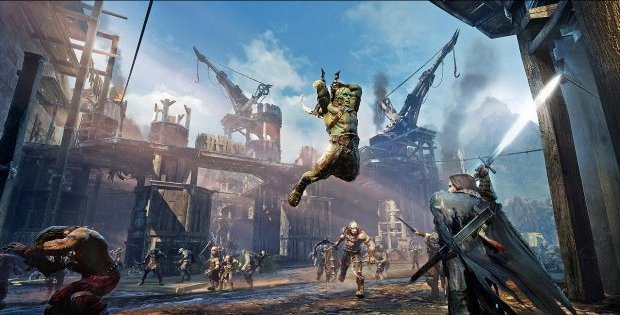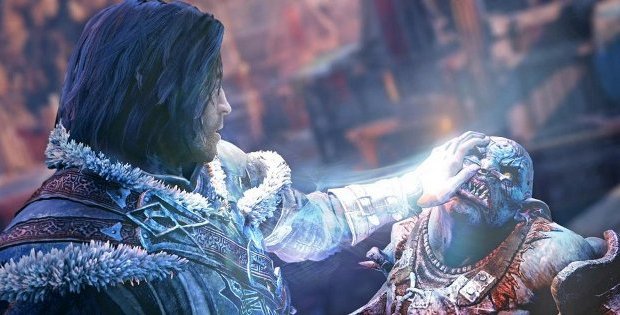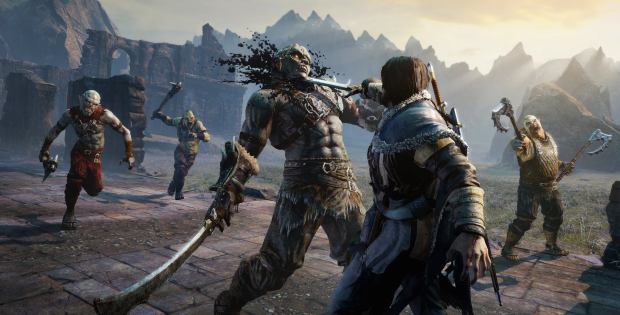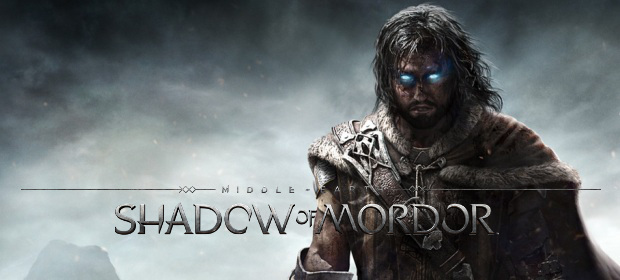One of the most interesting games up for release before the end of this calendar year is Lord of the Rings-tinged action-adventure, Middle-earth: Shadow of Mordor, a grown-up look at the events that occurred between The Hobbit and The Fellowship of the Ring.
Developed by Monolith Productions (of F.E.A.R, Condemned and Guardians of Middle-earth fame), Shadow of Mordor is part stealth, part action, part open-world monster – but what is it that makes it so appealing to us? Mostly, the Nemesis system, whereby individual enemies and NPCs in the game will remember your actions for the duration, and act accordingly. The potential for dynamic, emergent gameplay is huge, and it’s the main reason we’re excited.
Post E3, we got to fire some questions at Monolith’s Director of Design, Michael de Plater, to fill in some of the blanks we had on Nemesis, protagonist Talion, and what it’s like to develop a Lord of the Rings game outside the canon of the main novels.

GIAG: So, what made you choose to set the game in Tolkien’s universe, when the overall plot could have stood alone, perhaps as a new IP entirely?
MdP: From the inception of the game, we set out to make the best Middle-earth game that we possibly could. All of our decisions about the plot, the characters and the setting were inspired by the Middle-earth universe and stories. The thing is that Middle-earth is so grounded in history and myth and contains so much attention to detail, we could tell an original story and connect it to the established canon of the The Lord of the Rings and The Hobbit. In particular, we were inspired by the fact that some of the most compelling characters in Middle-earth are the ones with shades of grey and conflict in their personalities, such as Boromir and Saruman, and how they both set out to do the right thing, but were corrupted by the temptations of power.
GIAG: It has been said that because of the Nemesis System, the enemies have individual memories and will react to Talion in different ways depending on his actions – has that led to problems in development where one enemy’s behaviour conflicts with another?
MdP: We absolutely embrace the conflicts between our enemies, they viciously backstab and battle against each other for supremacy. The conflicts between different Nemeses are part of what makes the world feel so alive. They even have specific rivals who they hate or fear, they aren’t just sitting around static in the world waiting for the player to turn up.
GIAG: As it is set during the 60 years between The Hobbit and The Fellowship of the Ring, can we expect to see any familiar faces?
MdP: Definitely. We know that Gollum is in Mordor at this time searching for his Precious. There are also other powerful characters with a keen interest in the return of Sauron to Mordor and the powers of the Wraith.

GIAG: How big is the open world? Is it set entirely in Mordor, or does it encompass other famous areas from Tolkien’s sagas?
MdP: It is set entirely within Mordor, the two regions which we have shown so far are Udun and then many hundreds of miles deeper into Mordor on the coast of the Sea of Nurn.
GIAG: We’ve not seen any of Talion’s allies yet. Is the story Talion versus the World, or are their NPCs within Mordor to help him out or request his aid?
MdP: There are a wide range of friendly NPCs and characters to help Talion and request his help, from the remnants of Gondors forces enslaved by Sauron’s Army through to travelers and adventurers drawn to Mordor, and other characters who are deeply interested in the powers of the wraith and the implications of Sauron’s return.
GIAG: Did you feel restricted at any time by the source material, and feel you had to make concessions to please existing fans?
MdP: Not at all. Because the project was inspired from the beginning to be set in Middle-earth it informed all of our decisions.
GIAG: What are the pressures of writing something LOTR-related that is separate to the main canon? Did your team feel that there was a lot to live up to, or did you block out what has gone before and focus on your own vision for the universe?
Of course, we are fans of Middle-earth so we absolutely want to make a game that we can be proud of and that fans can enjoy. It is true that we very much focused on the source material and built our game using that foundation rather than looking at previous games.

GIAG: There is some evidence that last-gen versions of new-gen games can lose a great deal of performance fidelity. What informed the decision to make the game for both new and old platforms?
MdP: We want the maximum possible number of people to be able to enjoy our game. The team here at Monolith Productions have been very much focused on the new gen platforms, while Behaviour is focused one hundred percent on previous gen. That means each team is focused on making the best possible game they can for their respective platforms.
GIAG: The Nemesis System sounds very cool, but how complex is it? Do decisions affect the duration of the game, or does the world periodically “reset”?
MdP: Under the hood it is indeed pretty damn complex. However, from the point of view of the player we want it to feel as natural as possible. It’s like you’ve hooked into an Uruk Social Network. Players can just engage in the power struggles and conflict of the living world. We just want players to have the most memorable and unique enemies they have ever had in an action game.
Middle-earth: Shadow of Mordor is scheduled for release on PlayStation 4, Xbox One, PlayStation 3, Xbox 360 and PC on 7th October 2014. We did ask the Ketchup question, but Michael chose not to comment – make of that what you will.






